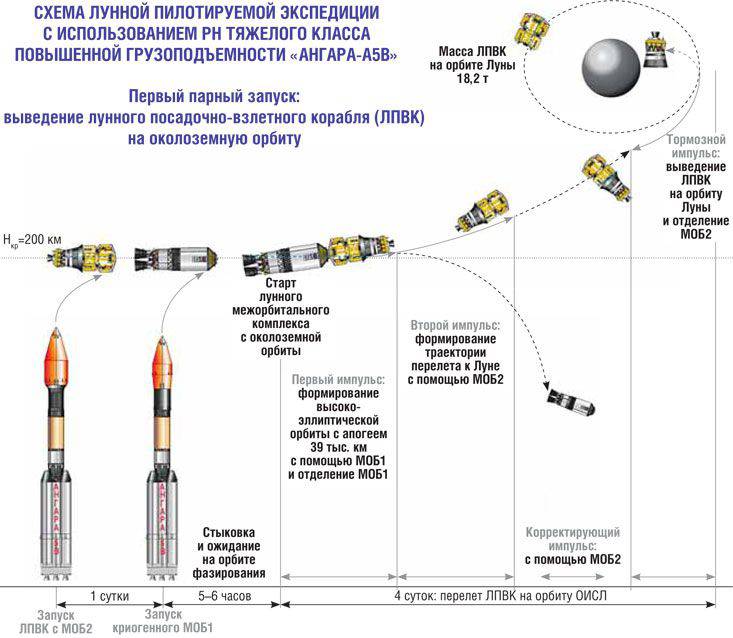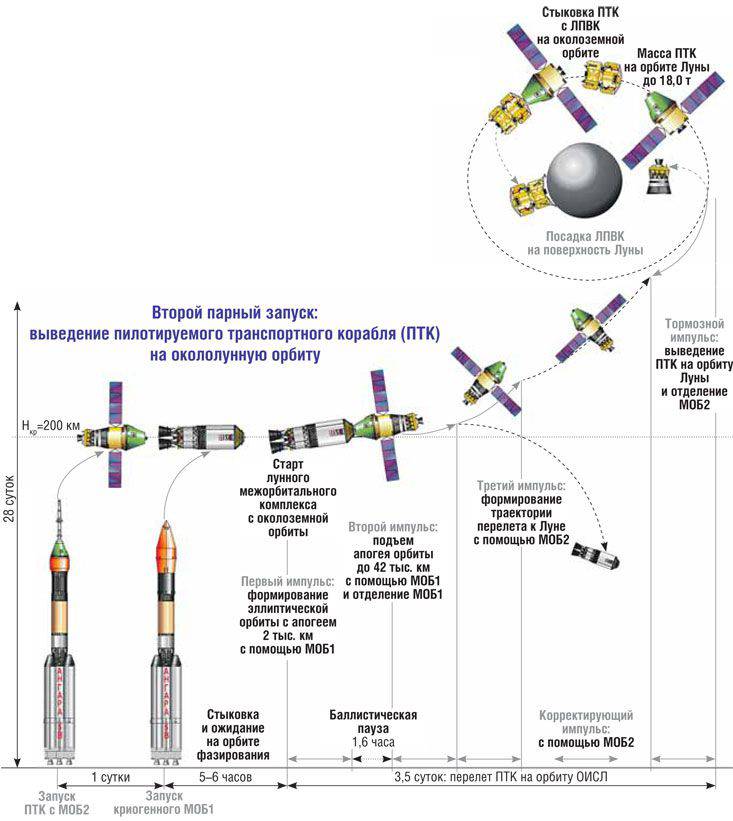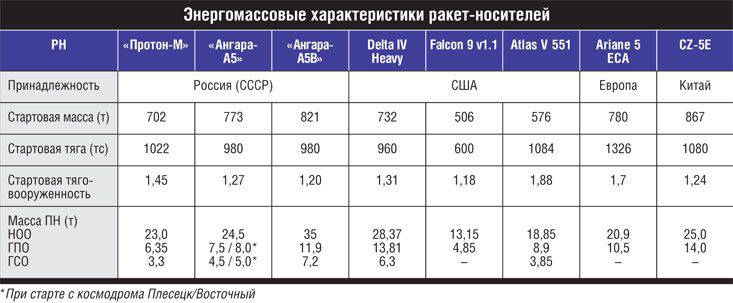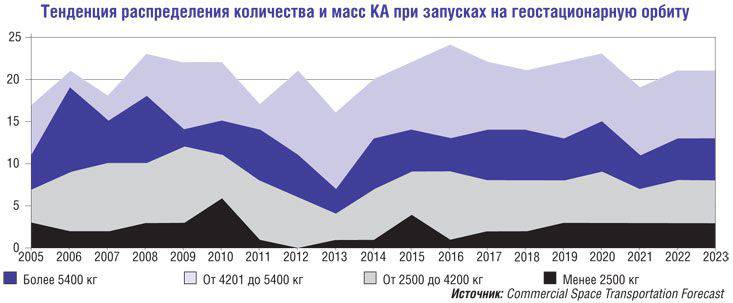Space in open access
As you know, the main document defining the interests of the state, the main goals, priorities and tasks of Russia in the field of research, exploration and use of space is approved by the President of the Russian Federation Vladimir Putin in April 2013 “The foundations of state policy of the Russian Federation in the field of space activities 2030 of the Year and the Future. ”
In accordance with this document, the main priorities are to ensure the guaranteed access of Russia to space from its territory with the development and use of space technology, technology, work and services in the interests of the socio-economic sphere and national defense, as well as state security; the creation of space assets in the interests of science; activities related to manned flights, including the creation of a scientific and technical reserve for manned flights to planets and other bodies of the Solar system in the framework of international cooperation.

Realization of these goals is ensured through the use and development of existing scientific, technical and production potentials for the creation of promising means of launching, interorbital tugs, target and service systems of automatic space vehicles (KA), manned spacecraft of new generation, infrastructure elements for deep space activities and breakthrough technologies for solving target problems and production technologies.
The result will be the preservation of Russia's status as one of the leading space powers, confirmation of self-sufficiency in ensuring its own space activities across the full range of tasks requiring the creation of an orbital group of spacecraft based on an economically efficient fleet of Russian launch vehicles.
The need to maintain stable positions and competitiveness in the launch services market is an incentive for improving the technical and economic indicators of HR, above all, increasing their energy capabilities.
Most clearly, all these factors manifested themselves on the example of the most economically successful product of the Russian cosmonautics - the heavy-class Proton PH. It was the launch of the Proton launch vehicle on the international launch services market and its continuous modernization that allowed the GKNPTs to them. MV Khrunicheva survive in 90-s and "zero" and maintain industrial cooperation, ensuring the maintenance of the Russian orbital grouping of the spacecraft and participation in international projects.
Payload on competition scales
In order to decide which SVs to develop in the FKP-2025, it is necessary to understand that the energy capabilities of the PH are determined by the mass of the payload being put into the working orbit. Often, though not entirely correctly, the low-Earth orbit with an altitude of 200 kilometers and an inclination equal to the latitude of the starting point is used to estimate the energy of the PH. This orbit as a working one is not used for the functioning of a spacecraft, because, due to the deceleration of the atmosphere, the spacecraft's lifetime does not exceed a week on it. Among the diversity of spacecraft the most expensive and resource-intensive market of telecommunications spacecraft operating in geostationary orbit.

There are two features of the commercial launches of telecommunications spacecraft. The mass of commercial spacecraft is growing faster than that launched by federal programs. But as you can see on the graph, even the mass of commercial spacecraft is far from endless and their launch does not require a super-heavy rocket class (RL STK) type SLS.
There are also differences in the ballistic scheme of commercial launches. It so happened that, in contrast to domestic spacecraft, foreign spacecraft are not immediately put into geostationary orbit, but into an intermediate high-legged “standard geo-transitional orbit”. The spacecraft separated from the PH on it, after a ballistic pause for about five hours at the apogee of the orbit, with the help of its own propulsion system, it processes the impulse ensuring the formation of a geostationary orbit. Taking into account the fuel consumption, the mass of the payload put into the intermediate geo-transition orbit should be approximately 1,6 times more than in the working orbit, that is, geostationary.
But back to Proton, the need to maintain competitiveness in the launch services market led to four stages of modernization from the Proton-K initial version to Proton-M and development for the Proton launch vehicle, the new Briz-M upper stage, which made it possible to increase the mass of the payload put into geostationary orbit from 2,6 to 3,5 tons and to geo-transition orbit from 4,5 to 6,3 tons. But no matter how good a carrier Proton is, its launches are not made from the territory of Russia. There are problems with the supply of fuel for Proton, a highly toxic heptyl used on combat missiles and belonging to substances of the first, highest class of danger.

The country's leadership has set the industry the task of ensuring guaranteed access to space from its territory - spacecraft launches should be made by rockets designed and manufactured in Russia. In addition, it is necessary to improve the environmental safety of launches by eliminating the use of toxic fuels.
These tasks should be accomplished by the program to create a heavy-duty Angar rocket launcher, which will ensure the delivery of telecommunication and meteorological spacecraft and spacecraft to the geostationary orbit, ensuring the defense and security of the state.
Unfortunately, the Angara carrier rocket was created for quite a long time. A government decree on the development of a heavy class space rocket complex (KRK) was made based on a tender held for 22 year before the first launch of the launch vehicle. Real financing of the program began after 2005. It made it possible to conduct two successful test launches in 2014, and to plan launch launches with target payloads from 2016. When launched from the Plesetsk cosmodrome, the Angara-A5 PH with cryogenic RB KVTK will provide the 4,5 tons of the payload 7,5 tons to the geostationary orbit, and the BNZ-X UNT-XNNXN-XNXXN to the standard geo-transfer orbit (when using the Breeze-M ”-X NN XNNX X orNTX) respectively).
When deploying the Angara Aerospace Complex at the Vostochny cosmodrome, the Angara-A5 PH with the oxygen-hydrogen RB KVTK will ensure that the payload of up to five tons to the geostationary orbit and up to eight tons to the geo-transfer orbit. This energy reserve is sufficient in the near future to launch spacecraft under federal programs, but it does not allow competing for launching high-end spacecraft with new foreign heavy-duty heavy-duty rocket class Delta-IVH, Ariane-5ECA and Atlas-5. In particular, the Atlas-5 500-series PH puts the geo-transfer orbit up to 8,7 tons, and the most powerful of the PH used to launch the US Department of Defense spacecraft (Delta-IVH), provides payload weights up to 13,1 tons to the geo-transfer orbit.

After a comprehensive analysis of the priorities and requirements for energy capabilities of the SV, as well as the state of the space services market, the Roscosmos NTS determined that to solve tasks in outer space, including the removal of promising spacecraft weighing at least seven tons into a geostationary orbit and 12 tons into a geo-transitional spacecraft The PH capable of outputting at least 35 tons of payload to a low near-earth orbit.
Such a PH - "Angara-A5В" can be created by replacing the oxygen-kerosene third stage of the PH "Angara-A5" with an oxygen-hydrogen stage of a new development. The Angara-A5В PH is most unified with the Angara-A5 PH created, including on the ground-based space infrastructure facilities. For the energy capabilities of the Angara-A5В, the PH will correspond to the foreign high-capacity Ariane-6 (Europe), Vulkan (USA), CZ-5 (China) and H-3 (Japan) under development, and will provide near-term competitiveness of the Russian heavy-duty aircraft in the global space services market.
Our heavy "Proton-M" and "Angara-A5" LVs with liquid rocket engines (LRE) are commensurate with foreign RNs in terms of load capacity and the mass of the payload put into given orbits.
With or without gas
At present, the fleet of domestic military aircraft consists of the Rokot light class RN, the Soyuz medium class RN with the Fregat RB and the Proton heavy class RN with the DM and Briz RB.
In the near future, the “heptyl” PH “Rokot” and “Proton” will be replaced by environmentally friendly PH of the Angara family. At the same time, it is planned to improve the technology and reduce the cost of the Angara-A5 serial launcher. Work is also planned to replace the “heptyl” RB “Fregat” with a small-sized RB “ML” with environmentally friendly components. It is also planned to replace the veteran of the national rocket technology of the Soyuz launch vehicle with a promising middle-class launch vehicle, created as part of the Phoenix development work. During its development, it is planned to implement promising technologies that will improve operational performance, including the use of liquefied natural gas (LNG) as a rocket fuel.
Space in open access
What is interesting LNG? The main advantage is the fundamental possibility of reducing the cost of a propulsion system (RL) due to a radical decrease in the operating pressure in the engine combustion chamber (from 250 – 260 to 160 – 170 atmospheres) with a slight (≈4%) increase in the void specific impulse. The increase in the last parameter allows you to maintain the achieved level of energy-mass characteristics of the PH stages, despite the doubly lower LNG density compared to kerosene. The peculiarity of liquid rocket engines for LNG is the possibility of developing a recovery circuit engine that is less prone to transient explosive emergency situations. In general, preliminary technical and economic assessments show that we can expect a reduction in the cost of a remote control for LNG by about 1,5 times as compared to a remote control based on existing high-pressure kerosene rocket engines, which will increase the competitiveness of domestic LVs.
Assessing the experience of creating a super heavy-duty carrier rocket, it should be noted that Energia - Buran is undoubtedly the apogee of domestic rocket technology, an outstanding program in terms of organization, concentration of resources, achievements in the development of new structural and heat-shielding materials, the development of powerful technology kerosene and hydrogen engines, production and transportation of large volumes of liquid hydrogen, hypersonic aerodynamics, etc. The whole country worked on it, but deployed this space system in orbit the state did not have the means, strength and targets. At the same time, over a third of the funds allocated for space activities were spent over 10 years of work on the creation of the “Energy” - “Buran” complex, which affected the efficiency of the implementation of its other areas.
During this period, the European Space Agency (ESA) developed and began launching the Ariane-4 medium-class PH. The Arianspace company with this rocket took more than half of the market of commercial launches into geo-transfer orbit and, earning money, created a heavy-duty Ariane-5 class RN, which still provides for the implementation of ESA space programs and holds over 40 percent of the global launch services market.
The newspaper "Military Industrial Complex" (No. 27) wrote: "... The Pentagon should feel a sense of deep satisfaction, watching Russia lead further and further away from the creation of modern super-heavy rocket launchers", but estimates show that all military tasks in the foreseeable future The Pentagon will solve using a heavy-class PH type Delta IVH and Atlas-5, rather than the SLS PH, created for interplanetary flights. The energy capabilities of the 25-tonne PH class of the Angara-A5 and the PH of the 130-tonne class of the SLS are incorrect to compare - it’s like saying: “The 130-ton dump truck is better than KamAZ, and Gazel is not a machine at all”. Not at all: any vehicle - a car or a rocket, to be effective, must be operated near the upper limit of its energy potential. If the PH is run empty, the specific cost of removing the payload increases, and this is one of the main indicators of the effectiveness of the PH. Therefore, the state needs not one superpowering PH, but an optimally balanced CB park of various payloads for specific payloads. If there are no such payloads for the PH, then it risks dividing the fate of Energia. By the way, it is indicative that at the end of the program to fly to the moon, NASA and the US Department of Defense sent the museum to the museum without finding a payload for them.
The question of the target use of the STK launch vehicle was considered at the Roscosmos NTS - they came to the conclusion that there was no need for the withdrawal of single-cargo mass 50 – 70 tons before 2030 – 2035. The priorities of the space industry of Russia, we repeat, are defined in the “Fundamentals of state policy in the field of space activities ...” The primary tasks are the development of orbital spacecraft groupings for scientific, socio-economic and dual use. That is why, in the direction of developing a super-heavy-duty PH class, Roskosmos Scientific and Technical Council decided, prior to 2025, to limit the development of scientific and technical potential and the development of promising technologies.
It must be admitted that now the state of the Russian orbital spacecraft is, to put it mildly, not the most prosperous. In particular, the remote sensing satellite (Earth remote sensing) satellite grouping consists of only seven spacecraft and satisfies the needs of domestic consumers at the 20 – 30 percent level, whereas the remote sensing spacecraft groups of the USA, European countries and China consist of more than 35 spacecraft each, providing global control surface of the Earth, including in the radar range. Even in India, the remote sensing spacecraft cluster includes 17 spacecraft. This is where the PCF-2025 should go first - to the development of communications, navigation, remote sensing, meteorology satellites, including satellites with high all-weather spatial resolution, which is especially important for Siberia, the Far North, the Arctic and the Far East.
As the ballistic calculations, when you start from the cosmodrome Vostochny optimized version RN "Angara-A5V" with upgraded cryogenic RB KVTK-B will provide injection into geosynchronous transfer orbit payload mass of up to 11,9 tons and in geostationary orbit - to 7,2 tons, as well as the possibility of implementing the initial phases of the lunar manned program using the four-launch scheme (see fig.): two paired launches of the launch vehicle providing separate delivery to the lunar orbit of the lunar landing and take-off complex (LPVM) and The transport ship is being piloted (PTK) with their docking in orbit of an artificial satellite of the Moon (OISL) and the subsequent landing of LPVK with the crew on the surface of the Moon.
Typical pair launch includes payload to the ballistic trajectory of the PTK or LPVK and small-size interorbital oxygen-kerosene tug (MOB2), created on the basis of RB "DM", which will ensure the removal of the payload to the low near-earth orbit and subsequent docking with a thyrahumy syley. tug (MOB1), developed on the basis of the reserve for RB KVTK. MOB1 with a starting mass of more than 38 tons is displayed according to the scheme with the second launch of the Angara-A5B. After docking in low-Earth orbit and phasing, the assembled lunar inter-orbit ship due to energy MOB1 is first displayed in a highly elliptical orbit. After the production of fuel hydrogen MOB1 is separated and the kerosene MOB2 completes the formation of the departure trajectory. Further, MOB2 provides correction of the trajectory on the flight to the Moon and the transfer of the payload to the circumlunar orbit. The project FKP-2025 provides for work on these funds.
Of course, the multi-trigger scheme is quite complicated, it requires the highest coordination: the starting team must work simultaneously on two PUs, like a clock. Preliminary technical and economic assessments show that the use of a multipurpose high-capacity 35-ton class instead of a specialized super-heavy 80-ton PH will make it possible to reduce financial costs by more than an order of magnitude at the initial stage of the lunar manned program, and saved resources can be used in the interests of the development of the Russian orbital spacecraft socio-economic, scientific and dual use.
With regard to the use of solid fuel boosters (TTU) as part of the LV, it should be noted here that solid propellant rocket engines (RDTTs) have not only advantages, but also disadvantages compared to specific thrust impulses, worse than ~ 10 – 30 percent weight perfection of the design, fire and explosion hazard of production and equipment of the fuel charge, limiting the operating time, thrust control, temperature conditions during start-up, the harmful effects of combustion products on the environment. In addition, it is necessary to take into account the increased 30 – 40 percent cost of a PH with RTDT compared to a PH with a LRE and the need to invest significant funds in the development of the production, technological and testing base for creating large-sized solid propellant drives.
The use of large-size solid-propellant solid rocket motors as part of the LV was repeatedly considered in domestic projects, but taking into account the factors listed above, based on the comparison of alternatives, the choice was always made in favor of the LRE. Russia is a leader in the development and production of sustainer rocket engines, which are acquired by customers, including those from the United States. In the project FKP-2025, it is planned to develop the technology for creating a starting solid propellant solid propellant with a load of approximately 100 tons. The expediency of using solid propellant solid propellant rocket engines in prospective launch vehicles, for example, in the same Phoenix, will be determined later, based on the results of detailed analysis.
In conclusion: it is clear that the project FKP-2025 can continue to be improved, nevertheless, in terms of development of launch vehicles, this document is quite balanced, it reflects the real state of affairs and determines the prospects for the development of this branch of the industry to 2025, taking into account the established priorities of space activities and opportunities state to finance it.
Information